Menus
- Made something for everyone
- Rudge wheels on many European sports cars
- Another triumph at the TT
- Jorg Niemeyer fetched the drivable piece from the island
- Technical data Rudge Special
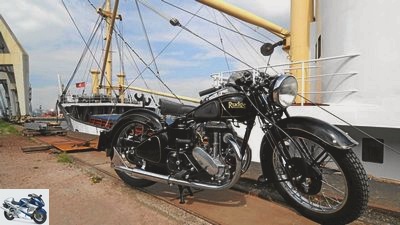
Siemer
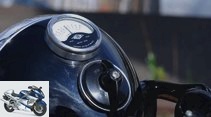
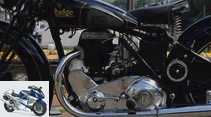
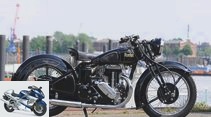
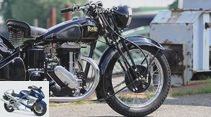
26th photos
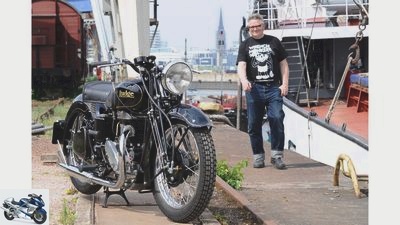
Siemer
1/26
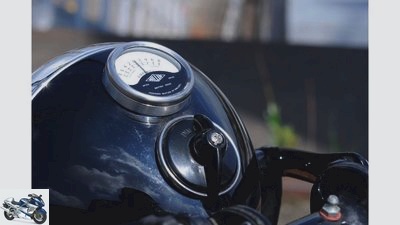
Siemer
2/26
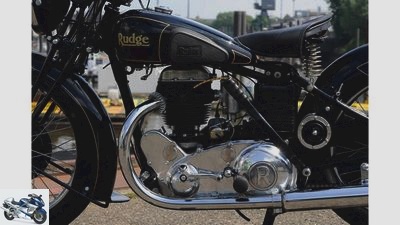
Siemer
3/26
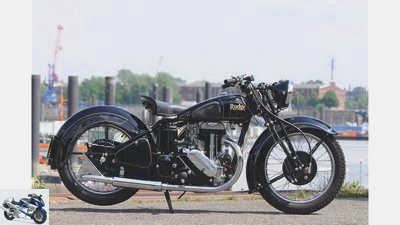
Siemer
4/26
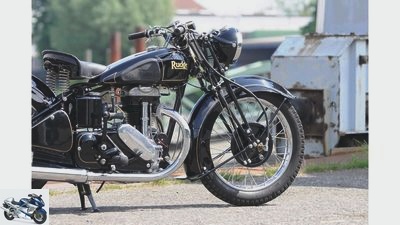
Siemer
5/26
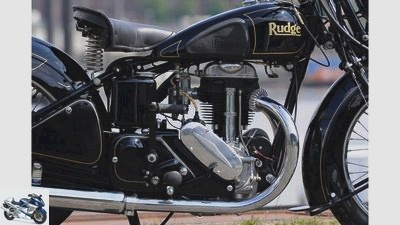
Siemer
6/26
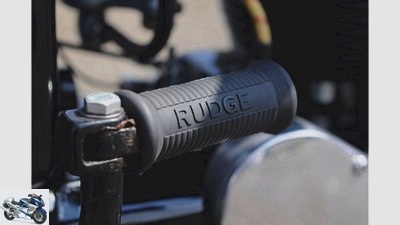
Siemer
7/26
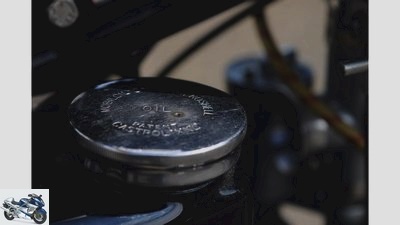
Siemer
8/26
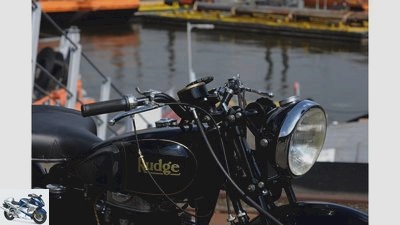
Siemer
9/26
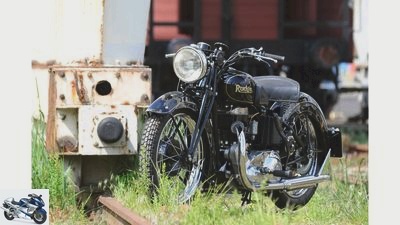
Siemer
10/26
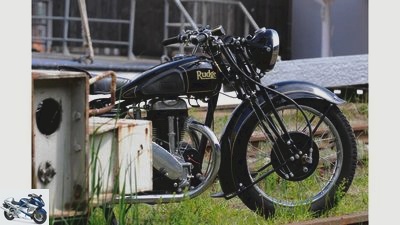
Siemer
11/26
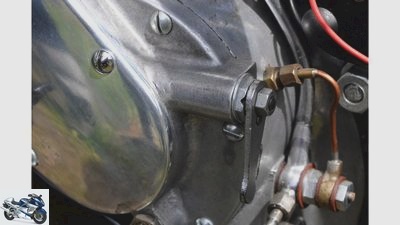
Siemer
12/26
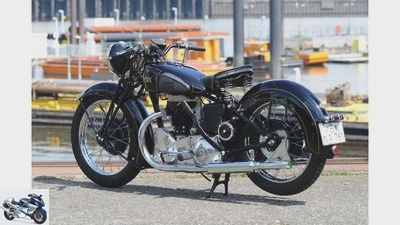
Siemer
13/26
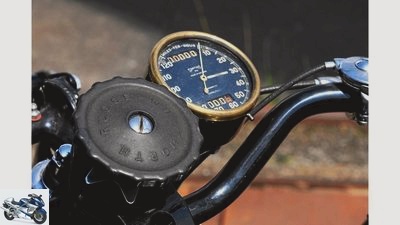
Siemer
14/26
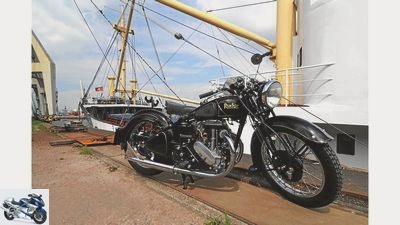
Siemer
15/26

Siemer
16/26
The reconstruction required patience, but thanks to the active Rudge Enthusiasts and their reproductions, everything finally came together.
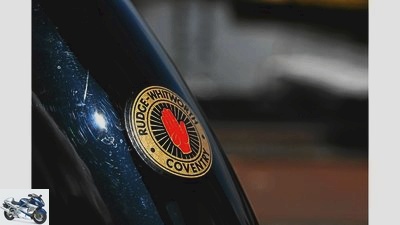
Siemer
17/26
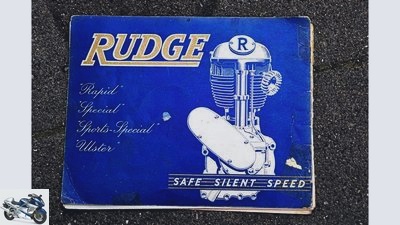
Siemer
18/26
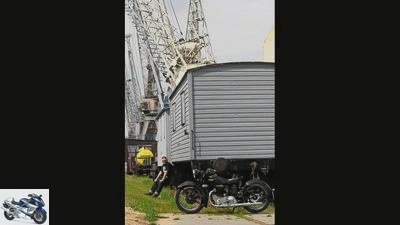
Siemer
19/26
Jorg Niemeyer brought the rare piece over the canal and lovingly restored it.
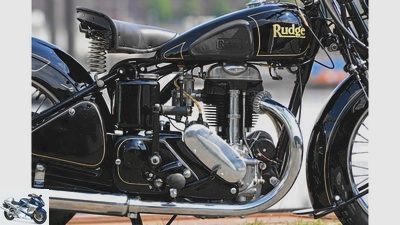
Siemer
20/26
A sheet metal panel covers the gearbox, but the brake lever reveals that this one is shifted to the left.
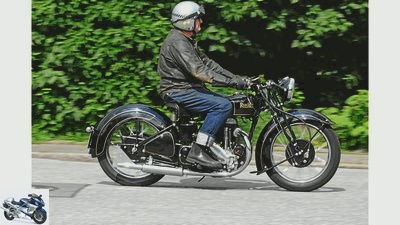
Siemer
21/26
The four-valve engine gets going very sonorous, but by no means stormy …
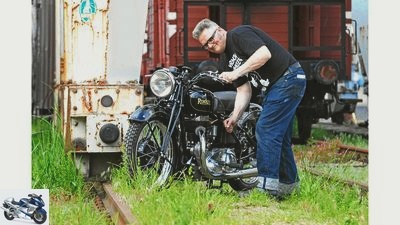
Siemer
22/26
… The Rudge slips onto the stand with astonishing ease.
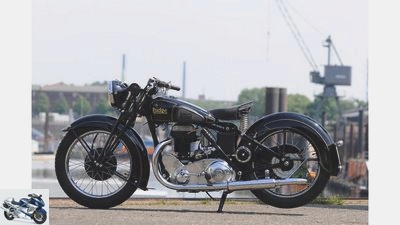
Siemer
23/26
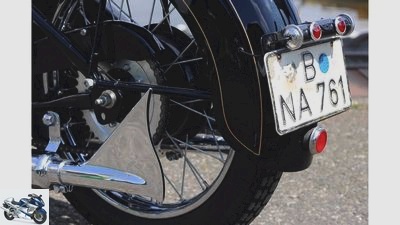
Siemer
24/26
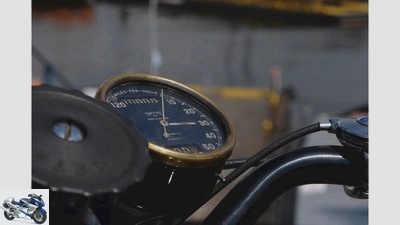
Siemer
25/26
… The Smith speedometer has been overhauled, but the lever for the main stand just needed new paint …
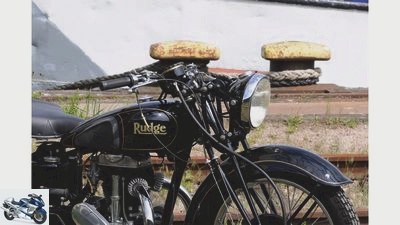
Siemer
26/26
Rudge 500 Special
Made something for everyone
Content of
Four-valve, four-stroke single-cylinder had already won races for others. Rudge, however, transferred this technology to series production as early as 1924 and delighted sporty touring riders. For example with the special from the late 30s.
W.he asked the boys about a great, sporty motorcycle before the war, and it was not only in England that it heard the name Rudge a lot. It has never been indifferent what a motorcycle looks like. Not even what design features it uses and what kind of image its manufacturer has. The no longer small, but also not really large manufacturer from Coventry drove victory after victory, presented its high-quality series single-cylinder in a lean and clear form and equipped them with four-valve heads. That pulled. Even with models that had no racing ambitions.
Buy complete article
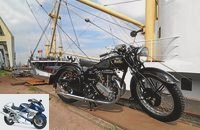
Rudge 500 Special
Made something for everyone
Ulster and Special with fashionable saddle tanks
The half-liter version made its debut in 1925, and it was to become the backbone of the company until the rather inglorious end. Of course, Rudge soon tried to place the high-performance motorcycles in the sport, but initially only with moderate success. In 1927 they indicated their potential with a third place in the European Grand Prix, then the breakthrough: In 1928 Graham Walker – still in the lead in the Senior TT – won the Ulster Grand Prix by a huge margin. As a result, the fastest production model was no longer called Sport, but Ulster. As usual since 1926, these included the Special and the more simply equipped, less popular Standard. Both have 19 instead of 21-inch wheels and sweeping mudguards, but in principle with the same engine and chassis. The former takes on a supporting function in the tubular frame, which is open at the bottom, while a friction-damped trapezoidal fork with a spring and mechanical steering damper, developed by Rudge, leads at the front.
Developments have been made carefully and consistently. Like the factory racers, Ulster and Special carried fashionable saddle tanks from 1928, the Special initially even as a combination container for oil and petrol. In addition, half-hub drums replaced the belt brakes used until then. The front could not only be operated with the hand lever, but also in combination with the rear with the foot lever. Dry sump lubrication came in 1930, and this year could have been a golden one for Rudge.
Sporty motorcyclists have long valued the company, and further victories should increase the company’s fame. George Hack, who had already taken care of the roof-shaped cylinder heads of the 500s, was now allowed to try a class lower. He thought things through to the end and, in the interest of optimal combustion processes, developed a head with four radially arranged valves operated by a total of six rocker arms. With a bang, it was possible to build three engines for the TT. Although they all had cracks in their pistons during training, they took the first three places. But that’s not all: guest driver Wal Handley also won the senior TT for Rudge with the tried and tested 500 – more publicity was unthinkable back then. But in vain, because at the same time the global economic crisis struck, within a year the sales figures in 1931 fell from just under 8,000 to just 2,500.
Rudge wheels on many European sports cars
Rudge was a premium provider. The attempt to send 250cc with JAP two-valve engines to catch customers was unsuccessful, so from 1931 a four-valve engine was also offered in this class. Anything but bread and butter, accordingly difficult to sell if the masses don’t even have butter. The Special, after all, thanks to its dignified engine characteristics, was able to offer itself to a broader group of buyers as a tractor for combinations, but it could not pull the cart out of the mud either. However, the company was fairly broadly based: a result of the merger of the bicycle manufacturers Rudge (founded in Wolverhampton) and Whitworth Cycle (Birmingham), it produced bicycles in Coventry with great success from 1894. The prototype of a motorcycle rattled through Crow Lane as early as 1910, and sales began in 1911. At the same time, bicycles continued to be produced, and the production of wire wheels for cars also proved to be very lucrative. With their patented central locking, the Rudge Wheels soon became part of the appearance of many European sports cars, and the license to replicate in Italy was secured by the young and up-and-coming company Borrani. Another business area opened up in 1931, the sale of complete engines; under the name Python, Rudge singles found their way into chassis from Zundapp and Imperia (Germany), Miller (Italy) and James and Cotton (England).
Another triumph at the TT
Thanks to all these efforts, there was still a little money left to further develop the motorcycles. An oil bath chain case made of cast aluminum encloses the primary drive of the 500s from 1932, and the chain to the alternator also draws its lubricant from it. In addition, the larger Rudge can be jacked up extremely easily: A long lever on the left-hand side pushes the main stand down via a deflection. The financial problems could not be avoided, however, and bankruptcy threatened in 1933. Then again triumphs: in 1934 Jimmie Simpson won the last Rudge victory on the Isle of Man in front of two brand colleagues on the 250cc Rudge, and in 1935 the factory ceased its official sporting activities. In the same year, the company became the property of a major creditor, Electric & Musical Industries (EMI), who even invested, made a new 250 with a two-valve engine and a more stable fork possible for Special and Ulster. The 500 series finally received encapsulated cylinder heads from 1937, the Special also switched from manual to foot control, two years later it was over.
Jorg Niemeyer fetched the drivable piece from the island
An engine of this era – for whatever reason – got lost in a slightly older chassis with a sidecar, which was advertised in the English trade journal Classic Bike some time ago. Rudge, this story, this technology: The British specialist Jorg Niemeyer was immediately enthusiastic and brought the rare and roadworthy piece from the island. Single in his Hamburg store & Twin (see also MOTORRAD Classic 1/2013) everything was completely dismantled, overhauled and rebuilt over the past few years. Niemeyer dismantled the oil routing that had been changed by the previous owner, a retrofitted air filter box had to make way for the standard battery compartment, and the sidecar is now rolling through the Hanseatic city alongside a BSA. In terms of their substance, the engine, transmission and chassis are of high quality. The crankshaft with roller bearings drives the camshaft and the oil pump on its right-hand side by means of a toothed wheel; a toothed wheel on the camshaft sets the ignition magnet in motion using a chain. The primary drive is done by a simplex chain, on this side of the engine is also the chain drive of the generator attached in front of the cylinder base. The power is transferred to the four-speed gearbox, which is exceptionally left-shifted, via a four-plate clutch.
All solid British engine construction, the differences are clearly in the head. The Rudge-Four started with two parallel hanging inlet and outlet valves, and unlike the Ulster, the Special always left it at that. The sports model appeared in 1932 – like the successful 350 TT winning machines – with a fully radial head. Strangely enough, there was no extra power, which is why from now on there was a mix: inlet valves parallel, outlets radial. The latter got the heat balance quite well. The Special didn’t need such tricks, the outward-striving guidance of the exhaust ducts and manifolds was enough for her to stay completely cool.
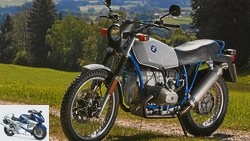
Workshop
Restoration of the BMW R 80 G / S
Part 1, engine
read more
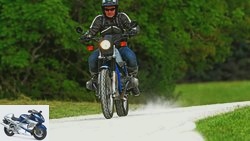
Workshop
Restoration of the BMW R 80 G / S
Part 2, drive
read more
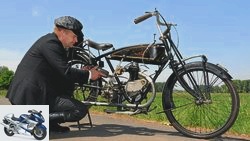
classic
HEROS 200 restoration
Full tank, new oil and freshly lubricated valves
read more
Technical data Rudge Special
Engine: Air-cooled single-cylinder four-stroke engine, a chain-driven camshaft below, four valves operated by bumpers and fork rocker arms, bore x stroke 84.5 x 88 mm, displacement 495 cm³, compression 5.5: 1, power approx. 20 hp, Amal carburetor Type 76/113, dry sump lubrication, primary drive via simplex chain, four-disc clutch, four-speed gearbox, secondary drive via chain.
Landing gear: Tubular steel frame open at the bottom, trapezoidal fork at the front with friction dampers, rigid rear wheel, half-hub drum brakes at the front and rear, wire-spoke wheels, 3.25 x 19 tires at the front and rear.
Information: The Rudge does not gather fans, but enthusiasts, as you can see on www.rudge.co.uk.
Related articles
-
Harley-Davidson Night Rod Special from 2009 – Technical Data
Harley-Davidson Night Rod Special Technical data from 2009 Technical data Engine Number of cylinders, type 2, V-engine output 90.0 kW / 122.0 PS at 8,000 …
-
Harley-Davidson Night Rod Special from 2008 – Technical Data
Harley-Davidson Night Rod Special Technical data from 2008 Technical data Engine Number of cylinders, type 2, V-engine output 90.0 kW / 122.0 PS at 8,000 …
-
Harley-Davidson Night Rod Special from 2014 – Technical Data
Harley-Davidson Night Rod Special Technical data from 2014 Technical data Engine Number of cylinders, type 2, V-engine output 90.0 kW / 122.0 PS at 8,000 …
-
Harley-Davidson Night Rod Special from 2013 – Technical Data
Harley-Davidson Night Rod Special Technical data from 2013 Technical data Engine Number of cylinders, type 2, V-engine output 90.0 kW / 122.0 PS at 8,000 …
-
With the versatile Velocette KSS Mark 1 Special on the move
Kel Edge On the move: Velocette KSS Mark 1 Special The versatile 1930s racing machine Contents of racing bike for the road or series motorcycle with …
-
Presentation of the Royal Enfield Himalayan Sleet 2018 – limited special edition
Motorcycle Show in Milan EICMA 2019 Presented by Royal Enfield 10 Images Royal Enfield 1/10 The Royal Enfield Himalayan has since its presentation …
-
Harley-Davidson Night Rod Special from 2011 – Technical data
Harley-Davidson Night Rod Special Technical data from 2011 Technical data Engine Number of cylinders, type 2, V-engine output 90.0 kW / 122.0 PS at 8,000 …
-
Harley-Davidson Night Rod Special from 2010 – Technical Data
Harley-Davidson Night Rod Special Technical data from 2010 Technical data Engine Number of cylinders, type 2, V-engine output 90.0 kW / 122.0 PS at 8,000 …
-
Harley-Davidson Night Rod Special from 2012 – Technical data
Harley-Davidson Night Rod Special Technical data from 2012 Technical data Engine Number of cylinders, type 2, V-engine output 90.0 kW / 122.0 PS at 8,000 …
-
Harley-Davidson Night Rod Special from 2007 – Technical Data
Harley-Davidson Night Rod Special Technical data from 2007 Technical data Engine Number of cylinders, type 2, V-engine output 89.0 kW / 121.0 PS at 8,250 …